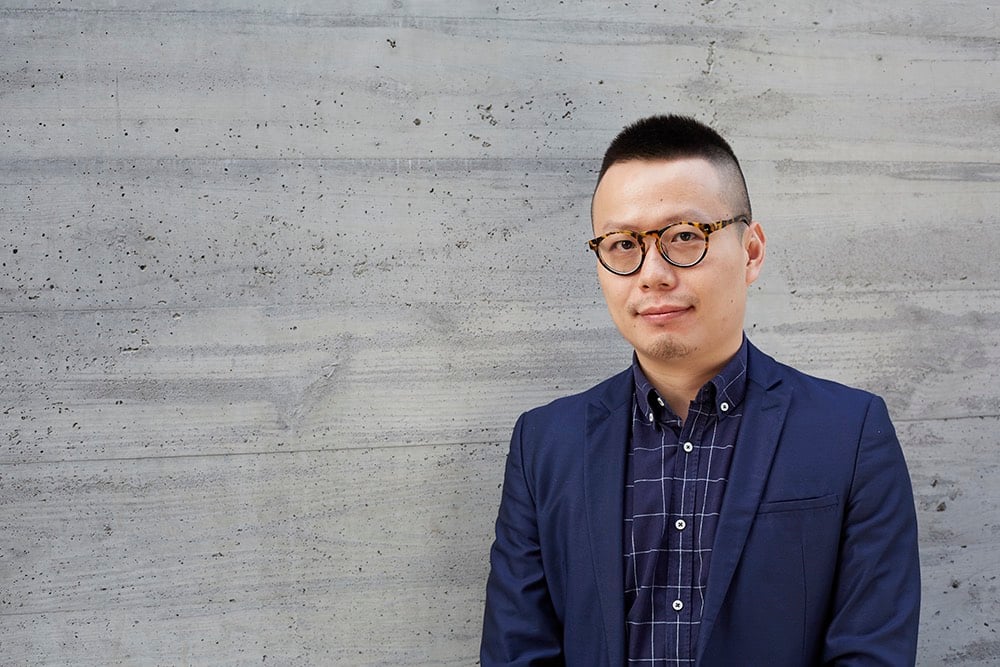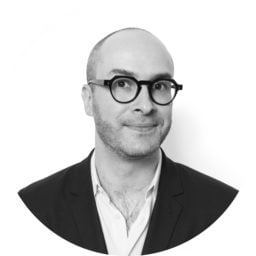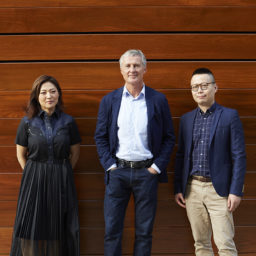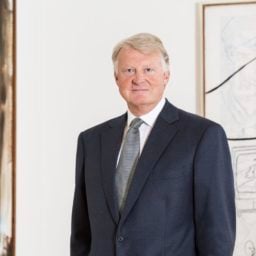People
Leo Xu, David Zwirner’s New Hong Kong Ace, on the Heady Opportunities China Holds for Western Galleries
On the heels of his recent jump to David Zwirner, the dealer discusses the future of the art market in China.

Last week’s news that David Zwirner had recruited the art dealer Leo Xu to be a director at the gallery’s planned Hong Kong outpost may have left some in the Western art world scrambling to look up his name—but not so in China, where the young gallerist has been one of the country’s brightest rising stars for the past decade. In fact, in Shanghai, where he has run Leo Xu Projects since 2011, the reaction was one of surprise and sadness at the gap his departure will leave in the city, and a wistfulness for the thriving, experimental art scene he created around his gallery. Hong Kong’s gain, at least for the moment, is Shanghai’s loss.
A former artist himself who is well versed in bridging East and West, Xu first opened a Beijing branch for New York’s Chambers Fine Art and then directed a Shanghai satellite for James Cohan Gallery, also in New York. Xu was inspired to open his own operation after reading New Museum founder Marcia Tucker’s classic memoir of art-world disruption, A Short Life of Trouble: Forty Years in the Art World. Now joining former Christie’s vice president Jennifer Yum in opening Zwirner’s Hong Kong gallery in January, Xu is starting a new chapter at an especially auspicious moment in the art business, when Chinese collectors have an appetite for Western art like never before.
With Leo Xu Projects now hosting its final show at its gallery, and doing its farewell art-fair turn at Art021 Shanghai (where Zwirner has a booth, too), artnet News editor-in-chief Andrew Goldstein spoke to Xu about his experience in China’s changing art market, his plans for Hong Kong, and the ripe opportunities he sees for Western art businesses in his country.
You’re in your mid-30s and you’ve already had an enviably varied career as a gallerist. How did you first get started working in the art business?
I’m from Shanghai originally, and when I was in school I started working at a local gallery called the Shanghai Gallery of Art, producing works for the artists. I was an artist myself, though I wasn’t trained specifically in the arts—I was a photographer and a writer. After I graduated, it was during the first boom for contemporary art in China, so I was lucky enough to get the offer to be a curator at a local museum called the Duolun Museum of Modern Art. Back then, there wasn’t much of an economy for gallery businesses here, so Shanghai was primarily a place for institutions.
What year was this?
I started working in museums in 2005. It was very exciting, but we were also suffering because there wasn’t much support from public funding or foundations, so the museums couldn’t really survive. It was really a bummer. So I left museums to work in galleries, moving from Shanghai to Beijing to become the founding director of Chambers Fine Art, a New York gallery’s outpost in Beijing. It was one of the first galleries to start in the Caochangdi district [Beijing’s art district], where Ai Weiwei was actually one of the founders.
What did Chambers Fine Art hope to do with its Beijing gallery? What was the ambition?
Chambers represented a dynamic roster of mid-career Chinese artists in New York, so the owner Christophe Mao thought it would be interesting to extend the program from New York back to the artists’ hometown—particularly to catch up with the cultural moment at the time, with the Olympics coming to Beijing. Back in 2007 there was also this amazing momentum for the auction houses and the gallery business, so everybody was leaving where they were and opening a gallery in Beijing. Business was relatively easy, and relaxed.
What were the collectors like at the time? What were they most excited about buying?
There was a growing community of Chinese individuals who were collecting, but also an expat community that was joined by foreign collectors and tourists. The collectors were very avid, but their appetite was more focused on painting, especially the radical paintings that showcased the transformation of the society in the 1980s and ’90s. There wasn’t much diversity of media—you didn’t really see much video art, installations, or performance. The market was more for the kind of works you would see in the auction catalogues.
How long were you there?
I stayed in Beijing for two years until the economic crunch happened in late 2008, when I was approached by James Cohan. They wanted to find someone Chinese who knew the market and the local scene to co-run a space in Shanghai.
Why Shanghai?
They had opened a space in Shanghai before the Olympics and before the economic crisis. It was an okay moment, nothing happened. Shanghai is in some ways easier—it’s kind of like a middle ground between Hong Kong and Beijing. There is a very international expat community in Shanghai, people are curious, and foreigners don’t really suffer from the language barrier. It’s much easier, a safer ground for an American gallery to operate.
Shanghai has taken so much longer than Beijing to develop a real gallery scene. Why is that, and how is the Shanghai scene different?
Shanghai doesn’t offer the same large population of artists or critics or art professionals, but since the city boasts a large group of museums people have more curiosity. Artists living in Shanghai produce multimedia works, and the audience is much more open-minded about all sorts of mediums. So during my years at James Cohan, I was able to introduce artists from different generations and different media, including performance and video.
Who were some artists you introduced to the Shanghai audience at James Cohan?
We did an amazing show of Richard Long and people loved it. We also showed Bill Viola, Roxy Paine, and Yinka Shonibare, who was perfect for the gallery’s postcolonial location in Shanghai—that was a wonderful match.
Did the museums in the city take an interest in your programming and buy pieces?
No. The galleries were very much supported by individuals—private collectors.
How did you start your own business?
James was very supportive, so he let me curate a lot of the shows in the gallery, and he wanted me to introduce a younger generation of Chinese artists. So I did, and throughout the whole experience I felt there was growing momentum and demand for a younger generation of Chinese artists who were under the radar of the gallery market and the auction market, because they were playing a lot with multimedia across different disciplines. I thought there was something to be done, and at the time I was reading Marcia Tucker’s memoir, which inspired me very much. So I took a little courage and I decided I needed to run something similar to what she did with the original New Museum that would support new media and new ideas.
How did you build your program?
The program is actually very mixed. It started with Chinese artists that I had been paying attention to for almost 10 years, from even before I started my career—like the photographer Chen Wei and the video artist Cheng Ran. I got to know them when I was in school, and they were both active through the internet, making music and showing their work in different places underground. I had been following them for so long that we built something beyond just a friendship, and so they were part of the first group that joined my stable.
I also worked with a lot of international artists on a project basis, and we actually have a really interesting Berlin connection. We were the first to commission a lot of Berlin-based artists, like Wolfgang Tillmans, Simon Fujiwara, Henrik Olesen, but also the choreographer Jérôme Bel. We have a choreographed performance, cinema, new media, and architecture, with everything blended under the big umbrella of urbanism.
Both of those strands of your gallery, multidisciplinary art and international art, have only been embraced relatively recently by the art market in China. How have you experienced collector tastes evolving over your time there as a dealer?
I think we are learning very fast. Everything started with painting and sculptures, but for a couple of years collectors have been starting to look at installations, algorithm-based videos, and performances. Some of my collectors have even started collecting Tino Sehgal-type performances. They also read a lot, and they’ve started traveling abroad a lot—many have a house or family abroad, so the constant travel becomes a part of their life. They’re also visiting museums, looking at the magazines, and surfing the web, so art is something that has become inseparable from their day-to-day experience.
What kind of professional background do these collectors have?
They’re in finance, design, architecture, fashion, retail, and real estate development.
You’ve done a lot of international art fairs over the years with Leo Xu, and you’ve frequently done projects abroad, like your recent gallery takeover at Metro Pictures during Condo New York. Do you find it’s easier to sell the kind of avant-garde work you show to your collectors in Shanghai or to Western collectors?
Well, at the very beginning it was easier to sell outside, but over the years we’ve grown a very loyal and strong base of collectors within China and from Asia. It started to become the case that if we wanted to move beyond that base it was much more difficult to find the support or clients from the international community, because Chinese art didn’t generate that much interest or attraction around the world. That’s one of the reasons that the gallery has traveled so much to all sorts of art fairs—we wanted to expose the artists as much as we possibly could. We’ve done at least one gallery presentation outside of China every year so people get a chance to see them, so that after a few years they really understand their subject matter.
Speaking of avant-garde, there’s a large contingency of the Western audience that thinks avant-garde Chinese art is synonymous with political art. Right now, for instance, there’s major survey of Chinese contemporary art at the Guggenheim that is getting a lot of attention, and it almost entirely focuses on oppositional political art from the 1990s and 2000s—Ai Weiwei’s generation—that criticizes the government and the status quo. Now we’re in a very different historical moment, with a strong government under Xi Jinping and a burgeoning economy. Is there still such a political strain to the art that is being made by the younger generation today?
Well, I feel there are more voices, and people’s resistance to the social pyramid has become very subtle and varied. It’s not a stereotyped kind of position, but artists are trying to approach the economy, the social climate, new cultures, and new policies from different perspectives, and also to connect them and contextualize them with new technologies, with the internet and all sorts of media. So that is a huge difference.
Your gallery has become a vital part of the young Shanghai contemporary art scene, and now people in the community are surprised to learn that you’re leaving the city again, this time to link up with David Zwirner and open a gallery in Hong Kong. How did that relationship come about?
We started a conversation last March during Art Basel Hong Kong and talked about the Asian market, with both of us agreeing that there’s such a high demand for professionalism within the gallery sector, and also there’s such a demand for great works across different disciplines. So I felt that to serve the community and to further support the artists that I’ve been working with, we needed a stronger platform. In the first place we need to build a strong holistic community, and David Zwirner can be a great platform for that.
And will you be able to take your artists with you to the Hong Kong Zwirner outpost?
Well, the gallery is looking for Asian and Chinese artists, and my artists, of course, look exciting to the gallery. But everything is in discussion, and it also takes a long time to do the proper study and research.
It could be the melding of two families.
Yeah.
Hong Kong is a very different place from Shanghai. Whereas Shanghai has a vital art scene, Hong Kong is so much more of a transactional city, where galleries come to sell art rather than develop and show artists. So many Western galleries that have opened there don’t even have galleries per se, just offices. In this much more sterile environment, how do you hope to build the platform you mentioned for a living arts scene?
In the first place, I really like Hong Kong. I was really impressed by the community—the collectors, institutions, and galleries. It’s like a big family. People are very kind and supportive, and they support art from Hong Kong, they support art from China, and they also welcome art from everywhere. Hong Kong is also a huge hub for Asia in terms of communication and travel, where there’s no language barrier, and the cultures are very mixed. So it makes the whole challenge of communication easier and more accessible.
Do you plan to still have any kind of operation in Shanghai?
I think the gallery likes Shanghai a lot—that’s why we’re doing two fairs in the city simultaneously this week—but we need to study the feasibility of Shanghai. For the moment we also need to fully focus on Hong Kong, because that’s where we’re launching the gallery and we want to bring an uncompromised program there. So I think for the time being I’ll be really committed to that city.
Why did David Zwirner decide to open a Chinese gallery at this point in time? Why does the gallery see now as the right moment, rather than at other times in the past?
David has been doing several Art Basel Hong Kongs over the past few years, and I think he was very touched and impressed by how fast the Asian communities were learning, and with such eagerness and curiosity. He felt there was a huge potential for him to bring his best program here.
What does ”his best program” mean? What will the inaugural show be, a survey of Chinese artists or someone like Luc Tuymans?
The inaugural show will be new works from Michaël Borremans.
Okay, so that’s about as European as you can get.
That is a typical Zwirner program. Of course, we’re going to bring Minimalism and conceptualism from the Zwirner program, which we don’t really see often in Asian contexts.
So the gallery will have a sort of educational role, introducing these art histories to unfamiliar collectors.
Yes, it will be very didactic.
That’s what everyone said about the first few Art Basels in Hong Kong, that galleries saw them primarily as opportunities to educate a new collector populace rather than sell to them. Do you feel that these educational forays have been successful enough that a Chinese art collector in Hong Kong might now be really excited to buy a Donald Judd stack?
I think so. I think it’s the time to introduce these kinds of artists, since people are reading, visiting museums, and seeing these types of works throughout the year at fairs, so it will be great if they can find this type of work at home.
You once told me that you didn’t think a gallery today “should limit its program and activities to just one location, or only to its gallery spaces.” That’s a philosophy that you took to heart with your Shanghai gallery. Do you think there’s an opportunity for you to do something similarly experimental, or migratory, at David Zwirner?
Yes. Actually, we are planning a very diverse calendar of programs around Asia. The Hong Kong gallery will serve as the headquarters, and we’ll be able to transplant our programs to as many places as we want.
That’s exciting—so you’ll be able to go and do a show in Seoul, or Singapore?
Or Beijing, or many other Chinese cities. I think Asia is a big canvas, so we’re going to do a lot here, and we’re going to experiment a lot.
A lot of Western art businesses are incredibly bullish on the Chinese market right now. Edward Dolman, the CEO of Phillips, recently told me that he sees China as “potentially the largest growth market for the art business, anywhere.” The country’s economy and international stature are also undergoing an enormous transformation. What would you say is the opportunity that China holds for these Western art businesses?
I think the opportunity comes from people in China understanding the bigger picture more, and the fact that the conversation around contemporary art—especially the avant-garde experimental stuff—has become core to people’s discourse. That means that there is huge potential—a huge opportunity. Also, if we look at the broader landscape, there are so many museums across Asia that are showing dynamic programs, and they’re calling for more programming from all over the world, and they’re also attracting a lot of foreign professionals to work in Asia. So I feel like it’s the right time to build a truly holistic market here.
Follow artnet News on Facebook:
Want to stay ahead of the art world? Subscribe to our newsletter to get the breaking news, eye-opening interviews, and incisive critical takes that drive the conversation forward.
SHARE
Article topics




No comments:
Post a Comment